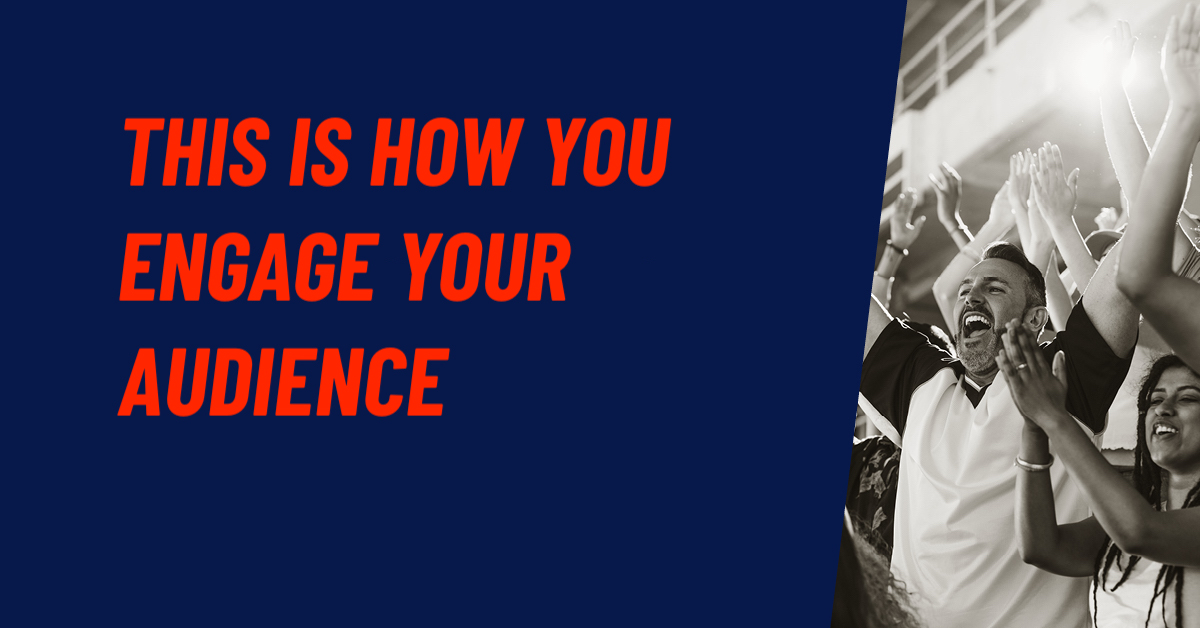The development of the global pandemic and how the afterpains are going to affect us both in private and business is still unsure. What we do know, is that nothing will be the same and that the challenges in customer engagement for retail businesses have become bigger. Before COVID-19, retailers already had a bigger challenge in engaging customers to its brands and companies. And that has become even more difficult in these days. The customer is less likely to visit stores and tends to spend less. So, developing an emotional connection with customers for the long term is therefore more challenging than ever. The big question for retail at this moment is how they can start interacting with its visitors, both offline and online, in a smarter and more effective way in 2021 to generate this essential engagement.
The challenges and solutions that we project for 2021 in the market, are coming out of a twofold development in the market, which do not only affect retail but the complete society, both privately as business-wise: the COVID-19 pandemic and the ongoing technological developments.
- Influence of COVID-19
Because of the COVID-19 pandemic, the offline stores have another major step to take: visits to the stores have to be attractive enough in order to overcome the health risks that COVID-19 brings. This increases the urgency to be able to scale up the digital presence. Not only the retailers that missed the step to online need to quickly catch up, also the companies that already had a strong e-commerce focus and attractive online presence need to take additional measures to manage all circumstances. And not just the e-commerce platform needs to handle the big increase in traffic, also the service and marketing departments need to be prepared. Especially now, where the ‘normal’ holiday season is about to start.
- Technological development in the market
A second important development, one that is already upcoming for years now, is the adoption of artificial intelligence and machine learning. Machine learning makes use of historic data, at which algorithms process data to predict customer behavior. The main question is: how can we apply the possibilities of machine learning on all your customer contacts? And not only through the marketing department, but also at the customer service? So, how can we understand and serve our customers even better, in a proactive way? Artificial intelligence is actually becoming indispensable, but for the application and implementation is still a lot of time and expertise required.
“By making better use of the power of artificial intelligence you are able to understand and serve your customers even better.”
These developments together enforce the difficulties and challenges that 2021 is facing for retail business in relation to customer engagement. Both in terms of revenues – purchases instore will hardly or not at all increase – and the margins. In order to be able to attract more customers to the stores and to increase financial results, the retail businesses are required to take action now.
The developments mentioned, lead to 5 focus areas in customer engagement which we’ll see high on the agendas in 2021:
-
Further migration of offline and digital commerce.
We are in the fourth industrial revolution, in which the physical and digital customer journey is merging more and more. Offline stores bring the experience that is much more difficult for online stores to create. It is essential to understand in which stage of the customer journey is triggered to visit the physical store, and also to know which interaction already has taken place. What has been bought before? Which preferences does the customer have? Clienteling technology is one of the solutions for this challenge that we will see being applied more often, at which data and knowledge are directly accessible for sales agents instore via a tablet or any other digital device. They can use this information to serve customers better and give them a personal experience, but giving personalized offers, advice and the required service.
-
Next level data driven loyalty.
In my opinion, next level customer engagement is more than creating a 1-to-1 relationship with customer by using nice promotions, offering a discount card, sending a birthday message, giving away benefits and discounts, playing around with points and closing deals. ‘Next level’ is about creating sustainable engagement, in which the customer feels seen as individual and experiences this as unique, valued, appreciated and supported within its own private environment. It is possible to achieve this by creating a seamless connected effort of sales, service and marketing and by developing a sustainable and emotional connection with the individual.
“Next level customer engagement makes sure that the customer experiences that she or he is unique, seen, valued, appreciated and supported within its own private environment.”
Through far-reaching personalization within loyalty services, you are able to create this sustainable connection with the customer. With the help from machine learning and artificial intelligence it is possible to customize your offer and especially rewards for loyal behavior and to surprise the customer. In this process, you are not only focusing on the stimulation of repeat purchases, but you are deep diving into the preferences and wishes of the individual customers.
-
Personalization and entering the private environment of customers in customer engagement.
As mentioned, COVID-19 makes it more difficult for customers to visit the stores. This has direct impact on the number of impulse purchases, which many retailers typically benefit from. Retailers therefore have to find different ways to yet generate these additional revenues. To be able to establish this, retailers will need to get even closer to the customers and get a more sustainable spot in the minds of these customers. By making a huge step in customer centric thinking and acting to it, the customer will feel an automatic pull to choose the brand, even when there is no necessity for it.
For this reason, personalization is one of the elements that we gain extra attention in 2021. By, for example, offering a larger variety in rewards, benefits and promotions, you have the chance to create a feeling of recognition. Starting partnerships with other companies like supermarket chains, fuel stations or mobile phone providers, makes it possible to better serve the daily needs of a customer, with respect for its privacy. You offer a freedom of choice to the customer, but at the same time you generate a required pull to your brand. In this case, personalization becomes an equivalent for ‘engaging’ your customers.

At VANEIGENS, we have developed the Customer Engagement Flywheel: a process flow in which a set of seamless connected products, activities and departments are able to jointly take care of an optimal customer engagement.
-
Collaborative marketing: join forces to become stronger in customer engagement.
The earlier mentioned partnerships can even lead to surprising cross-sector couponing solutions, in other words the offering of coupons and discount codes of other companies. Also, rewarding, sampling and co-creation between brands with the same objectives and target audiences are interesting examples of joint strategies in the field of marketing and sales to enlarge customer engagement. The goal is not only to stimulate the sales of the other company, but at the same time to increase your own engagement rate. You can see this as a symbiotic relation: the joining of forces is equally beneficial for both parties.
Furthermore, you are not only working on just stimulating repeat purchases, but you’re also diving deeper into the wishes and preferences of the individual. Causing that your customer is step by step getting closer connected to your brand and company.
-
Far-reaching innovation and scalability in service.
The modern contemporary consumer is longing for a more intuitive service interaction and that communication can take place wherever and whenever it fits him or her best. Besides that, the customer should be able to rely on the fact that the risk on problems with the customer service, like delays in handling speed of requests, is minimized. This trust is of great value for retailers: it’s an indication for customers to keep visiting the (online) store and for the development of engaged and loyal customers.
2021 will be used by many retailers to lift the service to customers to higher level, by making use of innovative technology and to become scalable for more peak and off-peak times. A great example of such innovative solutions if the face-to-face guiding of the the service process per video with real-time personalized advice and sales support. Or the further integration of messaging tools with social media platforms and channels like Apple Business Chat or Facebook.
Conclusions
Retail cannot continue on the same path as previous years, that is what the COVID-19 pandemic has made clear. Brands and retailers will need to give customers an even clearer and concrete reason in 2021 to choose for them, by guiding them even better in their buyer journeys and creation of personalized, experience driven environment with relevance in daily life. At which the customer, both in store and online, wants to be approached as individual and get the feeling that she or he is unique, seen, appreciated, supported and valued.
This can be achieve by serving the right stimulus at the right moment, by making personal contact, through offering simple next steps in service and sales, and realizing a cross-channel contact strategy via web, mobile, physical store, e-mail and social. In short: through creating next level customer engagement.
Want to know more about what we do for our customers? Then check out some of our client cases on for example Omoda and Rituals.

